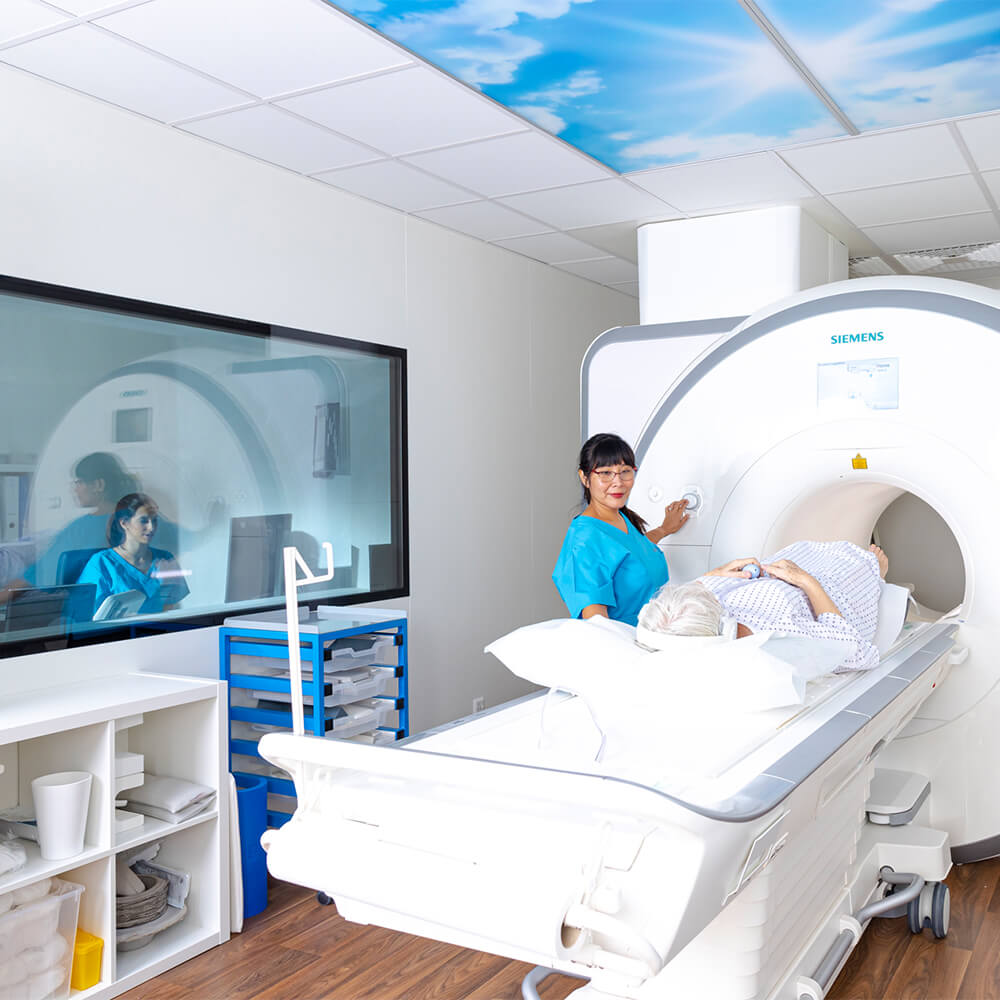Magnetic resonance imaging (or MRI) – also known as nuclear spin tomography is a very modern imaging examination method. This allows highly detailed sectional images inside the body to be generated. MRI requires no radiation at all and covers the widest diagnostic spectrum of all the radiological methods. In many fields, MRI is considered an indispensable method for rendering pathological changes in the body visible.
In my practice for radiology, I also perform MRI diagnostics with a 3 Tesla scanner. An outstanding aspect of my practice locations is the freely mobile MRI couch as a so-called double couch system. This allows thorough disinfection of the MRI couch between examinations as well as allowing calm patient preparation outside the examination room in a relaxed atmosphere.
Interesting facts about magnetic resonance imaging
Information on the function and use of MRI
How an MRI works
Magnetic resonance scanner – this is the name of the device that produces MRI images. This is a tubular device. As a patient, you are pushed on a transport couch positioned comfortably. Solenoid coils are located in the tube wall. They generate a pulsating magnetic field and radio waves.
There are atoms in our body which react to this magnetic field (so-called resonance). In this way, signals are generated that differ according to the type and composition of tissue and thus deliver excellent contrast. Different anatomical structures can be distinguished in detail, and even the smallest changes can be detected.
An MRI examination is useful in these cases
With magnetic resonance imaging, three-dimensional images of the inside of the body can be created without any radiation exposure at all and using the slice method. MRI diagnostics is particularly suitable for visualising soft tissues and fluid-filled cavities. Accordingly, MRI is especially important in assessing the brain and spinal cord, in diagnosing joints, in searching for tumours in soft tissues and organs, and in biliary tract diseases.
Various diseases and changes can be identified or excluded in this way. In addition, the radiation-free method allows repeated follow-ups without any concerns. The additional administration of contrast media can also be useful in MRI diagnostics for certain investigations, especially in searching for tumours, inflammatory changes or vascular damage.
MRI examination options
Examination areas for MRI diagnostics
By clicking on the different areas in the image you will obtain more information about the regions for MRI examination.
Possible regions for examination include, but are not limited to:
- MRI of the head
- MRI of the neck region
- MRI of the upper extremities
- MRI of the chest
- MRI of the heart
- MRI of the spine
- MRI of the abdomen
- MRI of the pelvis and hip
- MRI of the prostate
- MRI of the lower extremities

